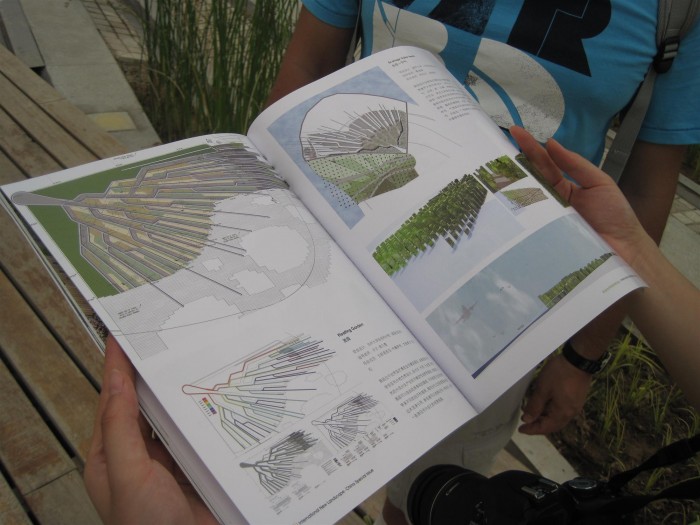
As I have myself experienced, what is articulately designed as a concept is so ever rarely built well in China. Compromises are made which may have been worse choice than the choice of building it at all. So I will give the benefit of the doubt here to the designers of the university portion of the expo because what was submitted to the Expo as a design didn't quite make it as built. As an example, the two projects above were a bit of a let down. The field of green towers ended up looking like this:
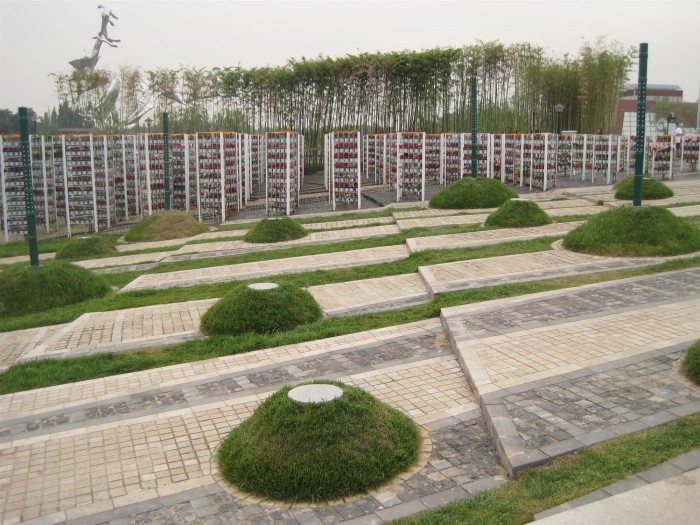
University of Saint Joseph (Macau). I thought we walked into a nursery! But oh nevermind.
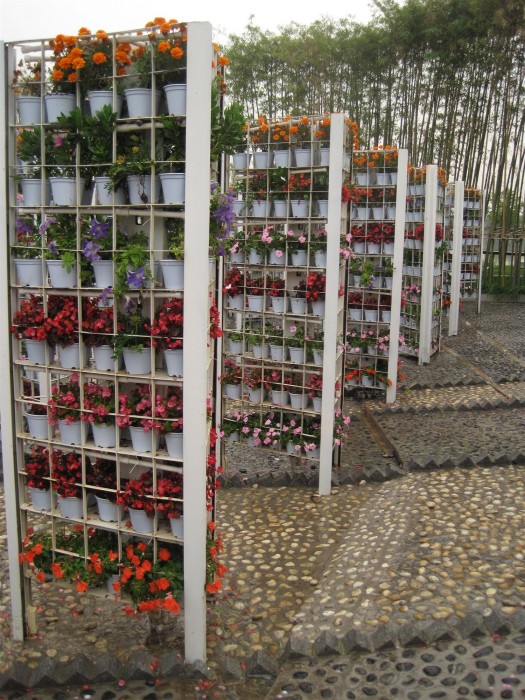
The overwatering of these plant racks did create a bit of micro climate... it felt cooler and pleasant than elsewhere
The other project on that page above was designed by the University of California, Berkeley, on the top (the water channels), and Columbia University on the bottom (the wood deck wetland). The Berkeley design projected water from a central spring channeled into spreading metal water channels. This water was then deposited by waterfall into Columbia University's wetland at the lowest grade to return to an adjacent waterbody:

The only interest for me in the Berkeley design is that the idea behind the emerging water channels exposed to the air seems to function like an artificial estuary... on a minuscule level.
My criticism of the Columbia University garden is that without the marshland plants they proposed to be planted, having annuals in a heavily water logged condition doesn't quite deliver the message of their design. Likewise, while I would have looked forward to seeing an inundated deck with waterplants, I suspect that, like most waterways in China, they are heavily regulated and not permitted to rise or fall naturally. Like I mentioned in the beginning of this post, they might not have had (and probably didn't) final control over planting species. It also may have been a struggle to acquire such "rare" natural plants because they were undoubtedly provisioned from a nursery (which in of itself is incredulous not having a wide variety of species for a garden expo). As I have realized over the months designing here, the tastes of a Chinese audience almost always steer to towards a fantastical, highly manicured picturesque which often directly conflicts with a true, natural landscape in transitional areas.

"The designer creates a multidimensional ecological swamp by building a riverside platform and displays different landscape effects by seasonal plants change as well as the rise and fall of water level."
Meanwhile, this garden by Peking University was closed for unknown safety reasons:
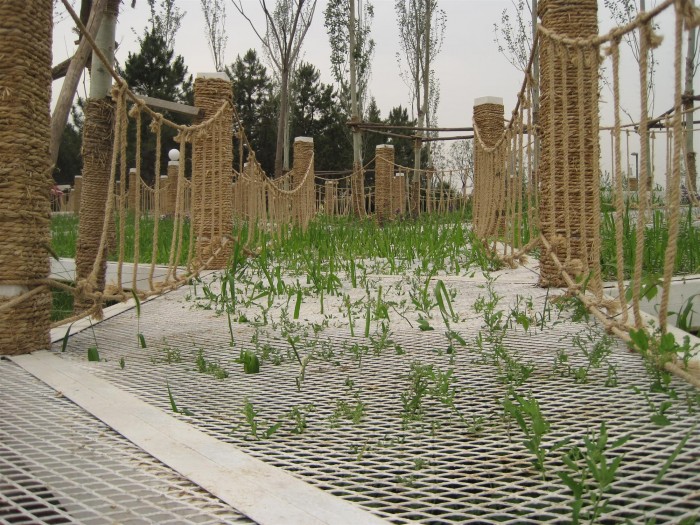
Peking University, "Poem of Wind", 590 sq meters
Other gardens were plagued by technical failures, such as this Aromatic Garden by the University of Toronto:
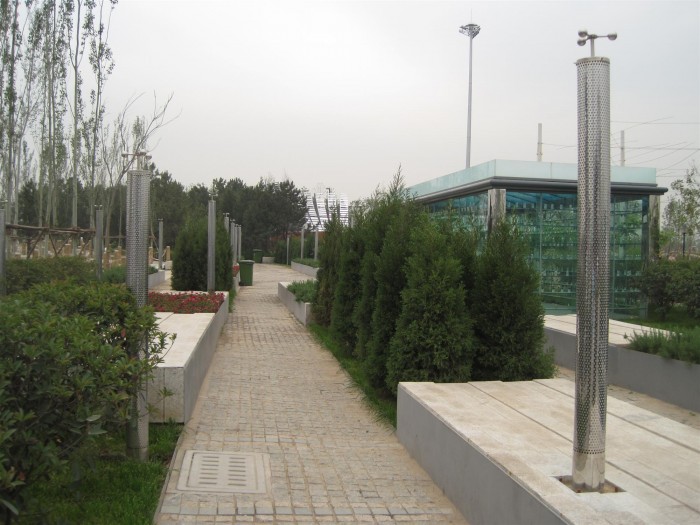
There was no scent coming from the perforated posts... And the glass structure behind was filled with scent bottles, but the building was locked.
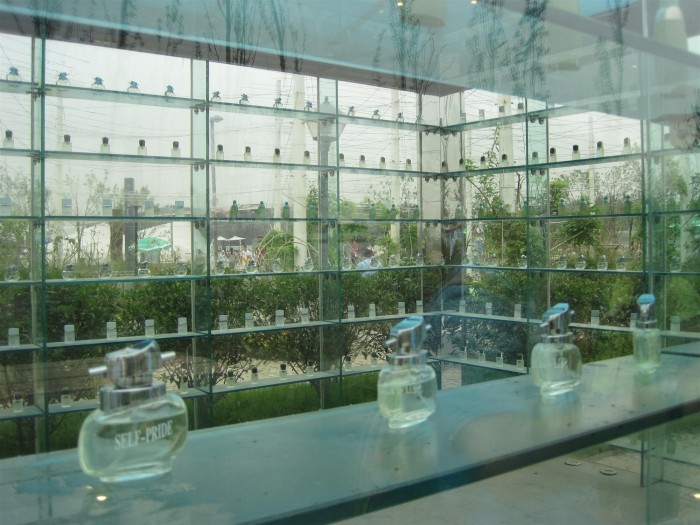
A glasshouse of inaccessible curiosities
Finally, I realized that not only was it difficult to quickly explain one's design idea on print, it is an even greater challenge to prevent it from immediately aging:
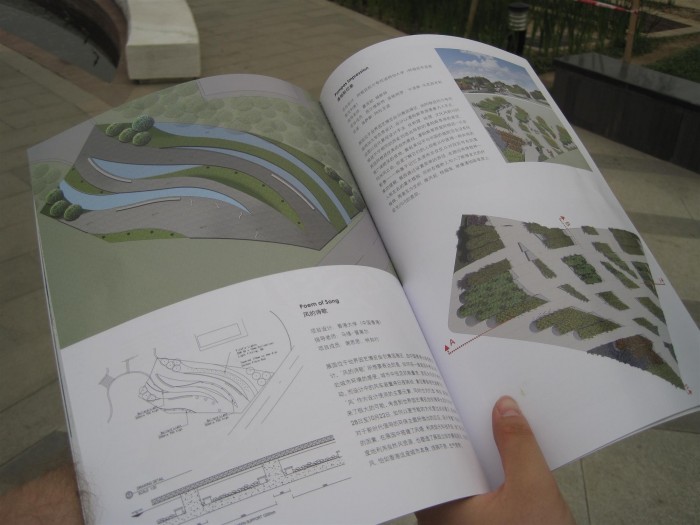
Hong Kong University I think
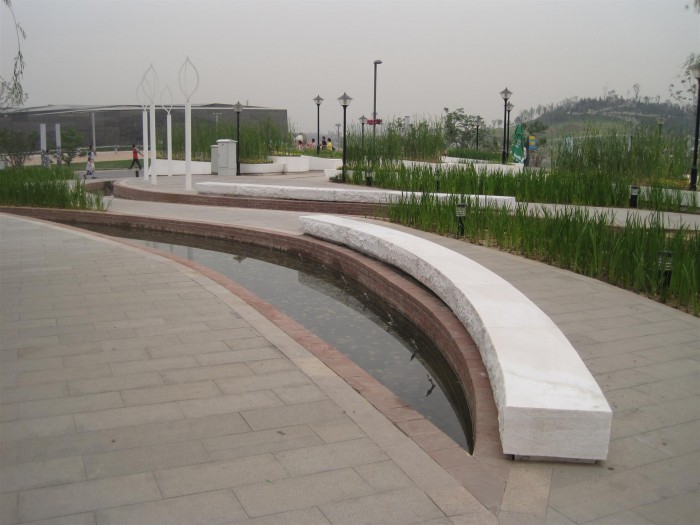
...and this is how it was built. Granted it was a cloudy day but it just looks so dreary and so 30 years ago.
In the adjacent garden, the last one we went to, I didn't bother taking any photographs except for this last one. I think it epitomizes the spirit of the Expo from a western perspective:
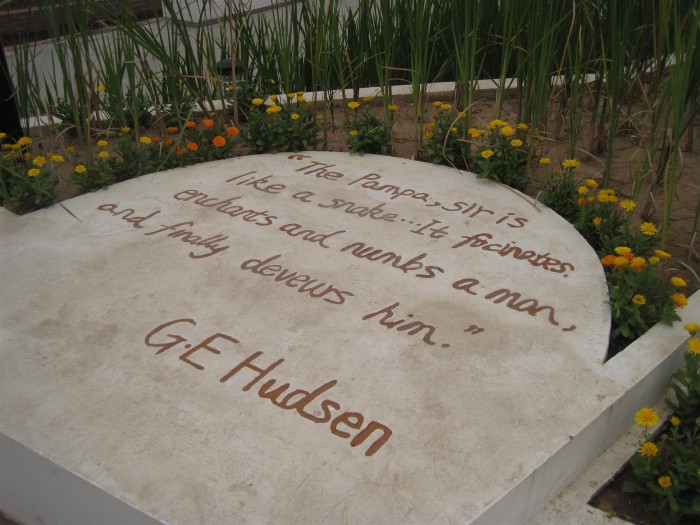
Just replace "Pampa" with "Expo" and you'll capture the spirit
[note] Updated Jan 31, 2012 to correct mislabeling of Columbia University and Berkeley designs. Expanded design criticism for Columbia's "Eco-Plane" for clarity. [/note]
7 COMMENTS ON THIS POST To “Xi’an Expo 2011: University Trials”
Aidan
January 31, 2012 at 8:31 amHey, Jermei-
Just wanted to point out that the image you have with the Caption “Yet I think it’s a failure of a swamp. Naturally, you would not find annuals planted in such a manner” is mislabeled. The project is actually the Columbia University designed “Eco-Plane”. So the drawings and text with which you are evaluating the project are describing a different project. I was one of the designers for Eco-Plane. Thanks.
Jeremi
January 31, 2012 at 10:14 pmHi Aidan,
Thanks for your clarification. I updated the post to reflect the corrections and expanded my design criticism of your project only because it looked so promising but really did not seem to have been built to your specific intentions. Did any of you or the other designers get to visit your own project? I’m curious about what you think worked and what did not, based on what is not seen in the images I posted?
Ringo Tse
November 10, 2011 at 12:25 pmHi
My name is Ringo from Penn landscape. i was an architect but now found more interesting in landscape. I like you work so much. btw. I worked in China as well, in beijng and shanghai.
I am interested in purchasing that book as well.
anyway. good to know your blog and you.
Jeremi
January 31, 2012 at 10:31 pmHi Ringo,
Admittedly, I purposely delayed in getting back to you because I wanted to get back to the bookstore I mentioned and look up that book again.. But I could not find it when I returned. The nature of bookstores in Shanghai I suppose. But I did manage to find it again online. Note that this book I’m referring to is different from the special issue booklet put out by International New Landscape magazine. For one, it’s a hefty casebound volume larger than A4 size and from what I remember it covers every single little thing from a landscape and planning perspective for the Expo. The book title is “International Horticultural Exposition 2011 Xian China PLANNING”, and it’s listed on Amazon for US $400 but if you could manage through a proxy to buy it in China you might save a bundle. The ISBN is 9787112130849. The following mainland China website lists the price at about US$46.
Good Luck, and Happy Chinese New Year
Karl
September 26, 2011 at 12:38 amthanks!
Karl
September 25, 2011 at 2:30 pmHi Jeremi,
thanks for your interesting post – I’m intersted in getting a copy of the edition of INL that you posted – would you be able to let me know what edition/date it was?
cheers,
Professor Karl Kullmann (U.C. Berkeley)
Jeremi
September 25, 2011 at 11:46 pmHi Prof. Kullmann,
Thanks for your comment. I believe the INL edition is 03 / 04 2011 NO.2 Special Edition. It appears that you can contact Lin Jiayi (???) from their Marketing Department, TEL :86-21-65751314 or
E-mail: info@internationalnewlandscape.com. I suppose Berkeley’s Library can help you out as well since I don’t know how it is for international ordering.
Best,
Jeremi